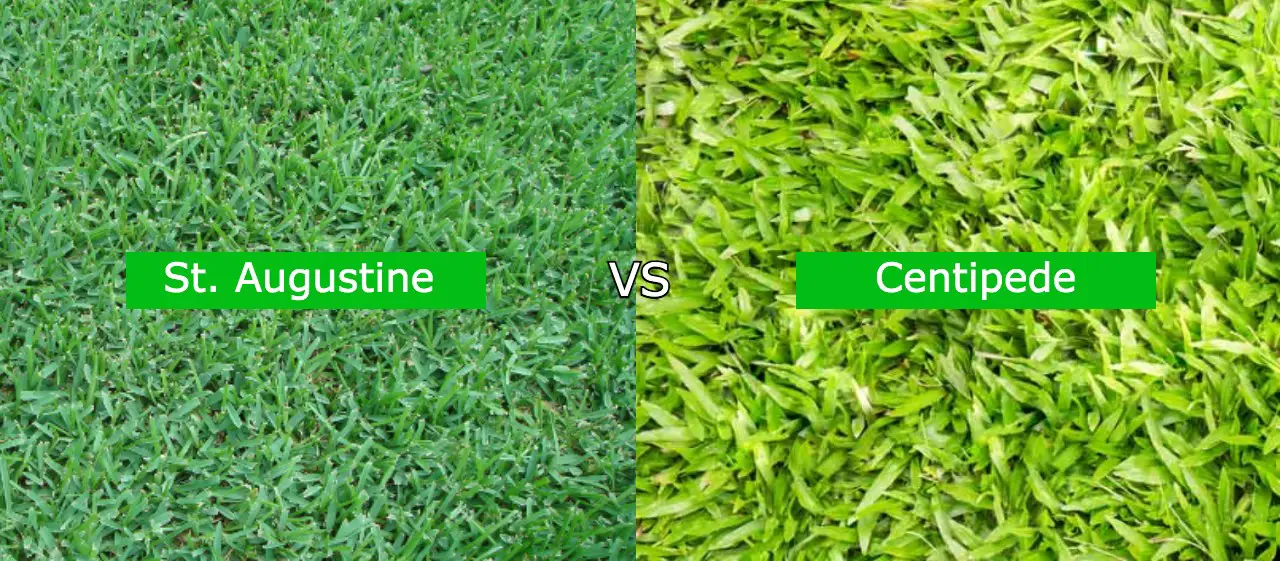Looking for creating and maintaining a lush green and problem-free lawn? You might have come across many comparative analyses on St.Augustine grass vs Centipede grass.
Whether you want the best flowers to plant in spring or need the right turf for your residential yard, you need to choose between the two.
Both St.Augustine grass vs. Centipede grass come with their benefits. Centipede grass is a low- growing, medium-textured that produces a weed-free turf. It is also attractive and easy to care. St.Augustine grass, in contrast has better salt tolerance and produces best turf for humid and subtropical areas. Also, it is thick and grows quickly but need a proper care schedule.
Remember that the type of turf you opt for must adapt to your area and comes with the qualities you want for your lawn. These two are the most popular choices of grasses that grow primarily in coastal and south areas, especially in Georgia.
That means if you live in a warmer climate, St. Augustine and Centipede grass are two options you have for your lawn. Each type of turf offers perfect durability and aesthetics for not only residential yards but also commercial landscapes.
Moreover, both offer different benefits and thrive in the environment if you care for them properly. However, choosing the one that suits the needs of your lawn is often overwhelming for many homeowners.
Here is all you need to know about St.Augustine grass vs Centipede.
Is There Any Difference between St.Augustine Grass Vs. Centipede Grass?
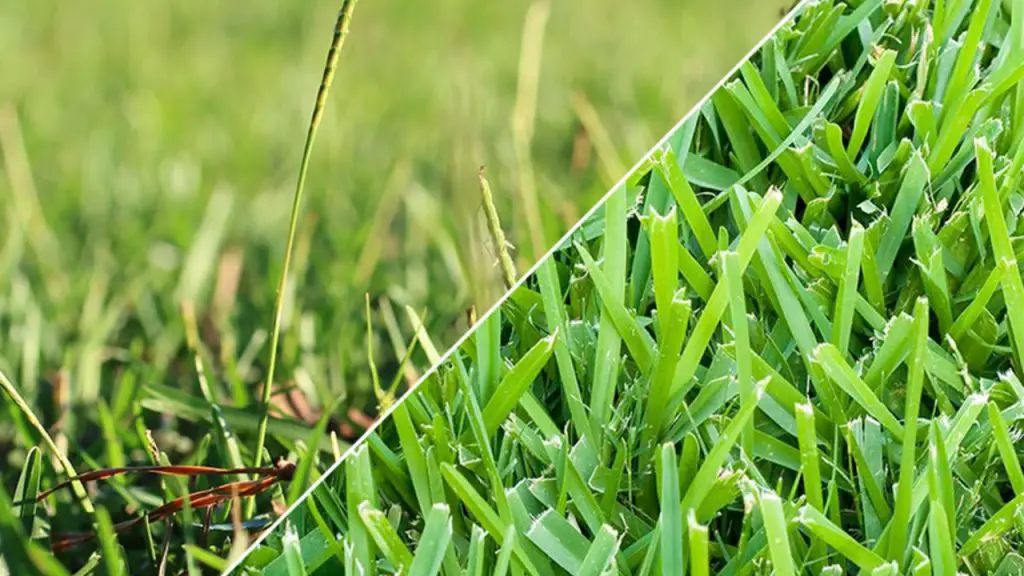
The main question is “what is the primary difference between St. Augustine grass and Centipede grass? or how we can compare St.Augustine grass vs Centipede grass.
Firstly, the difference between the two begins with their color, environment, care, and durability. Each type comes with a distinct shade of green color and needs a different level of care. The grasses have varying preferred environments to grow. Generally, centipede grass needs less care and St. Augustine has more varieties.
Note that each grass type comes with some significant differences. But each also has specific benefits and downsides. Some of the differences may overlap. For example, both St. Augustine grass and Centipede grass spread with time, and you can contain them despite their aggressive nature.
Typically, both St. Augustine grass and Centipede grass entail numerous similarities. That is why choosing the right one confuses many lawn owners.
Let’s plunge into the details to determine how St. Augustine grass and Centipede grass are different from each other.
Centipede Grass
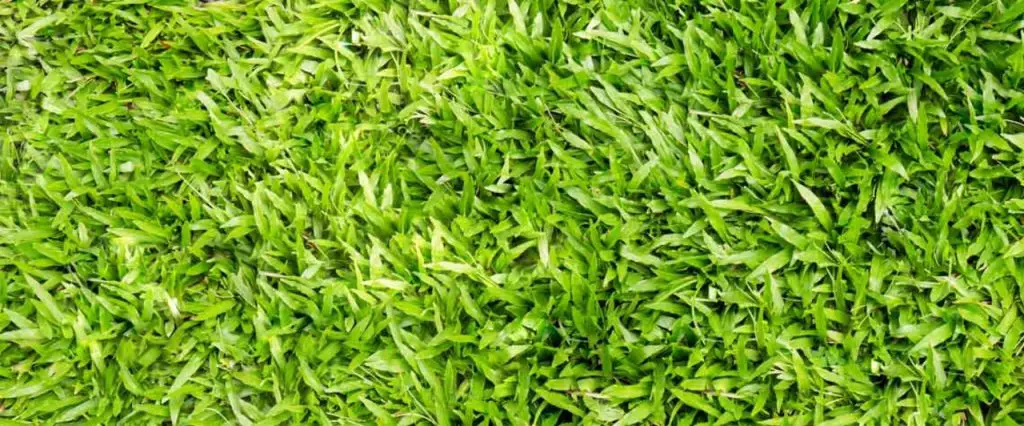
Centipede grass also refers to as Eremochloa buse. It is a low-growing, medium-textured grass that produces a heavy and dense weed-free turf. Centipede is an aggressively and quick-growing grass that is not only attractive but also requires no to little care.
Some General Features of Centipede Grass
- Centipede grass can withstand more cold than St. Augustine grass. However, it is less shade tolerant. The grass needs at least 6 to 8 hours of light to thrive and reduce the risk of dying.
- Although the grass is aggressive, you can easily contain it because it only makes surface runners easy to contain by bed liners.
- You can plant centipede by either using sprigs or seeds. The grass flourishes under proper care. This is one reason why this type of grass is the first choice for sod farms.
- Although the grass requires relatively less maintenance and care than St. Augustine grasses, it may suffer from some longer-lasting problems such as:
Problems that can occur with Centipede grass
Decline of Centipede Grass
Centipede grass decline is an issue very few lawn owners understand. Though it is not a disease, people consider it a major botanical issue. In fact, many people confuse it with the issues that prevent the grass from recovering fully.
Mostly, the grass that is three years old faces this problem. It often shows up in large, dry, and yellow patches of turf. The patches don’t stay longer and are weak.
In many situations, they are naturally occurring but may happen due to negligence. The cause of centipede decline is generally poor maintenance of yard that includes;
- Too little or much moisture
- Build up of heavy thatch
- Less than 2 inches mowing height of grass
Usually, you can solve the problem by changing your basic yard maintenance tactics or routine. Conducting a soil test is beneficial to identify the early symptoms of centipede grass decline.
Nutrient Changes
Centipede grass is also highly prone to changes in the essential nutrients present in the ground, particularly acidity. Fortunately, these changes are measurable and treatable. The grass type prefers the soil with a higher or optimal PH level of 5.6.
Anything higher or lower than this percentage may yellow or deteriorate your grass. If you have alkaline soil, it is important to learn about the best lime treatment for lawn. Keep in mind that the changes in nutrient levels may vary and you cannot limit it to one type.
Centipede grass may suffer from;
- Too little or too much nitrogen
- Too little or too much phosphorus
- Low levels of potassium
- Low levels of iron
- Changes in optimal pH levels
Iron Chlorosis or iron deficiency is the most common condition in the grass. It may cause your entire centipede grass to turn bright yellow or give it patches.
Nematodes and Grub Bug Larvae

A less deadly situation is when the grass suffers from grub bugs. These are little white beetle larvae that feed on the roots of the grass.
Healthy lawns can withstand some grub bugs, but if the population grows too high, then treatment is required, or the lawn will suffer.
While centipede grass doesn’t suffer from chinch bugs to high sensitivity, it has many problems with nematodes.
In general, nematodes are small microscopic worms. You may also find them in the form of little round scale insects. Mostly, sandy soil has a higher quantity of these insects. They have no one-and-all treatment.
The only way to deal with Nematodes and bug larvae is to make sure that you have a hearty thriving lawn that is not prone to damage.
Here’s an article on when to use grub control on your lawn.
St. Augustine Grass
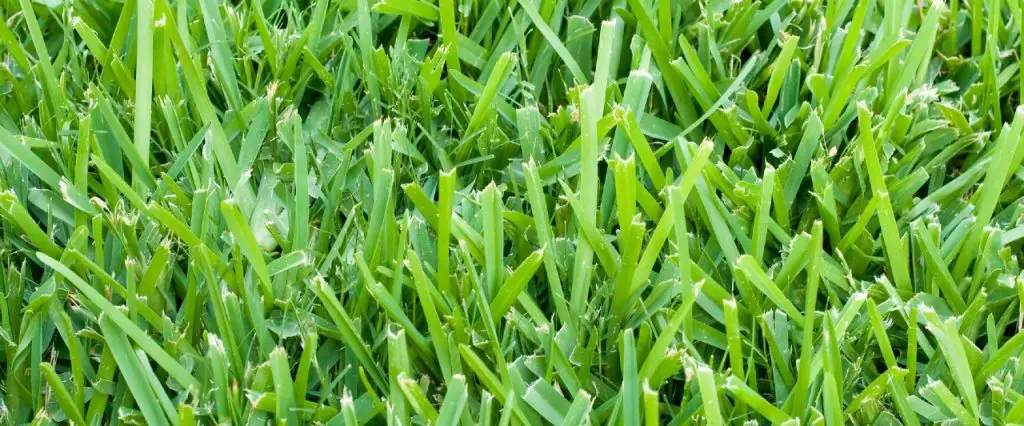
St. Augustine grass, commonly called as Stenotaphrum secundatum, has similar features of the Bermuda grass. The fine-textured grass has flat stems and wide coarse leaves in bright blue-green color. When you plant it, it creates a dense and deep turf.
Some General Features of St. Augustine Grass
- St. Augustine grass is adequately shade tolerant and doesn’t need much sunlight to thrive. But it doesn’t mean that it is not suitable for warmer climates. In fact, the grass does best when grown on the southern side of the equator.
- Unlike centipede, St. Augustine grass doesn’t need seeds to be planted and doesn’t produce viable planting seeds. You can plant the grass by using vegetative means. The grass spreads through the lawn by above-ground stolons and runners.
- St. Augustine grass is very sensitive to bugs which is a downside you can’t overlook. The bugs can be deadly enough for the grass. Luckily, you can control the bugs with insecticides. But it is essential to have frequent applications of insecticides for proper maintenance.
St. Augustine Grass – Types
St. Augustine grass has the following common types;
- Bitter-blue
- Floratum
- Palmetto
Bitter-Blue
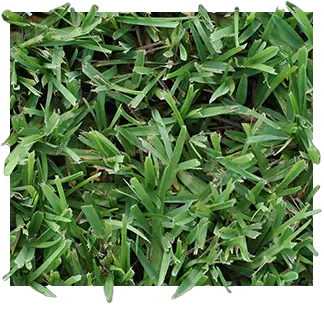
The expert considers bitter-blue grass an improved variety of popular St. Augustine grass family. The type of grass has a fine and dense texture compared to the original version. It is 3 to 4 inches long with mowing. You may also find darker blue-green color in this St. Augustine grass type.
When compared to the original type, bitter-blue comes with better cold temperature and shade tolerance. Overall, it is an intermediate shade-tolerant type. It also has good salt tolerance.
- Downsides of Bitter-Blue
Unfortunately, bitter-blue suffers from a higher sensitivity to bugs. It has a much lower tolerance to chemicals like atrazine used in many weed killers. That means it is harder to stop the weed from flourishing into a grass mixture.
As Bitter-blue has a low tolerance for atrazine, many sod farms don’t produce it. They prefer using Floratam.
Palmetto
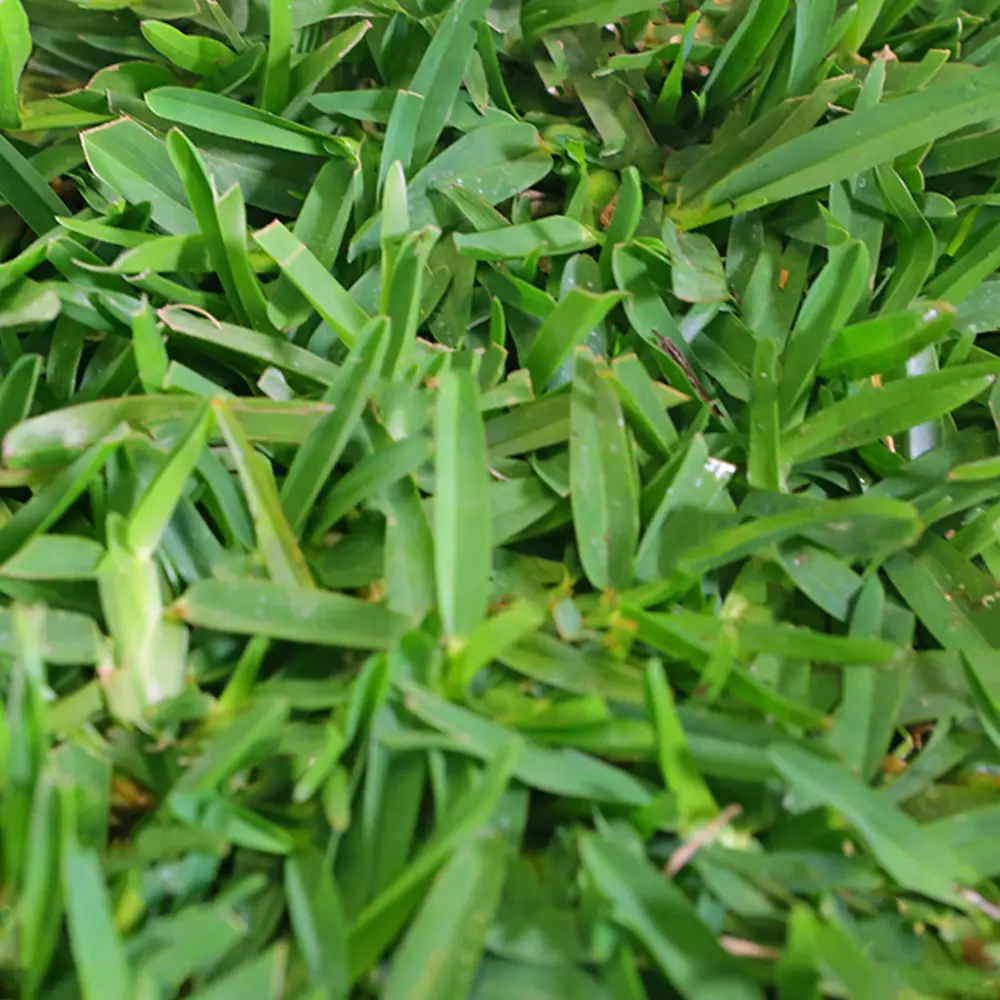
Palmetto is St. Augustine’s native grass and popular for fine texture and better color. The grass is semi-dwarf that gives it a unique and plush appearance and removes the risk of thatchiness. The width of Palmetto’s grass blades is not much different from Bitter blue.
However, it is finer compared to Floratam. The leaf blades are beautifully tapered at the edge or tip with a spherical end. That makes this type of St. Augustine grass softer to the touch.
Moreover, when you plant Palmetto in the proper climate, it turns into an evergreen grass. The native grass can even thrive in colder climates or temperature as long as it is not exposed to hard frosts. Note that repeated exposure to hard frosts can lead Palmetto to become dormant.
The grass type has an excellent drought tolerance. Even though it wilts like several types of St.Augustine turfs, it has the ability to recover when you apply water to them. Plus, Palmetto has superior shade tolerance compared to other varieties.
Floratam
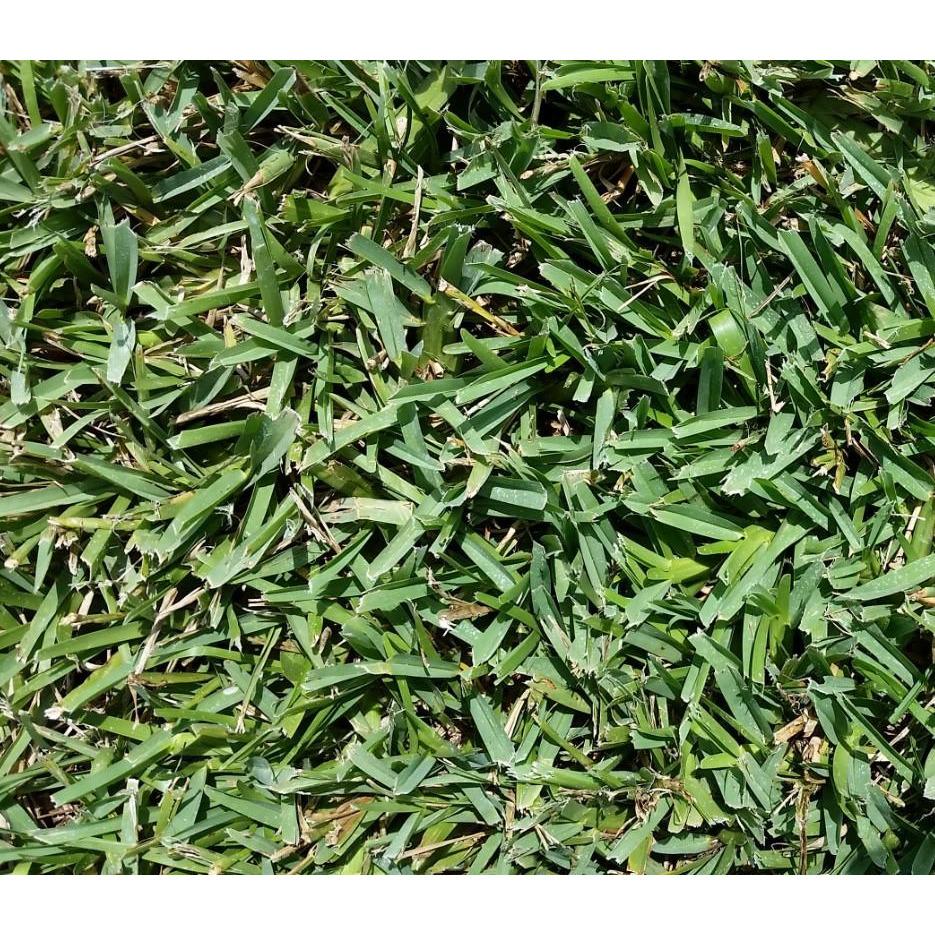
Creating a turf resident to Chinch bug and SAD virus is the primary purpose of Floratam variety of St. Augustine grass. These qualities benefit the grass type initially, whereas chinch bugs have weakened it and become a significant problem.
Floratum has longer and wider leaves with a coarse texture than other St. Augustine varieties. The leaves have purplish-red color stolons and 3 inches long internodes, creating a signature appearance.
Nonetheless, this St.Augustine variety doesn’t have much cold tolerance like other varieties. It may suffer from freeze damage if the temperature decreases below the freezing point for a long period.
Generally, Floratum is fast-growing, thriving, and spreading St. Augustine grass. It can broaden stolons to ¾ inch per day, whereas the mowing height is not longer than 1 inch.
Does St. Augustine Take Over Centipede?
This is another most important question many lawn owners are concerned about. It comes to mind when people use both Centipede and St. Augustine in their yard.
It is worth mentioning that St. Augustine spreads the runners wider into the Centipede. However, if your Centipede grass is healthier, it will also grow or expand into the St. Augustine as aggressively.
That means nor Centipede can neither St. Augustine choke out by the other. They do have a territory ownership fight but there is clearly no winner. In fact, it is DRAW.
St. Augustine Grass vs Centipede – Which One Should You Choose?
As you see that both types of grass have pros and cons, choosing the right type of grass depends on the place you live. If you’re confused about choosing or selecting the right turf for your lawn, visit the local nursery or gardening. An expert will guide you on the different variants available in the market.
However, if you need a turf that doesn’t need a lot of maintenance or requires sodding the yard, choose the Centipede grass. The grass is relatively inexpensive.
On the other hand, if you’re looking for something denser, thicker, and with a unique look, consider opting for the St. Augustine grass. For example, the bitter-blue is a fine grass that looks great in any yard.
These are a few things you must know about the St. Augustine grass and the Centipede grass to select the one that is more suitable.
What ELSE
Precisely, Centipede grass, in contrast to St. Augustine, is less nitrogen controlled. You can spread one pound of medium-release nitrogen fertilizers per 1,000 sq. ft of your lawn in spring and in mid-summer.
However, St. Augustine grass needs up to four pounds of medium-release nitrogen fertilizers once a year in equal installments from mid-spring to summer. It is essential when the grass is growing actively.
Plus, if your hometown experiences extended period of drought, you need to water the turf more often.
Also, check your lawn more frequently for possible signs of disease or insect damage. A healthy turf chokes out most weed and removes the need to apply chemical control.
Summing Up
All in all, the centipede needs less maintenance and is the best option if you want to avoid the sodding cost of the yard. It is also relatively affordable. But if you want a grass type that lasts longer and offers you better variety, St. Augustine is the right choice.
St Augustine grass vs Centipede grass selection depends on your personal preference. But you must consider the pros and cons associated with each type the southern state for a thriving yard.

